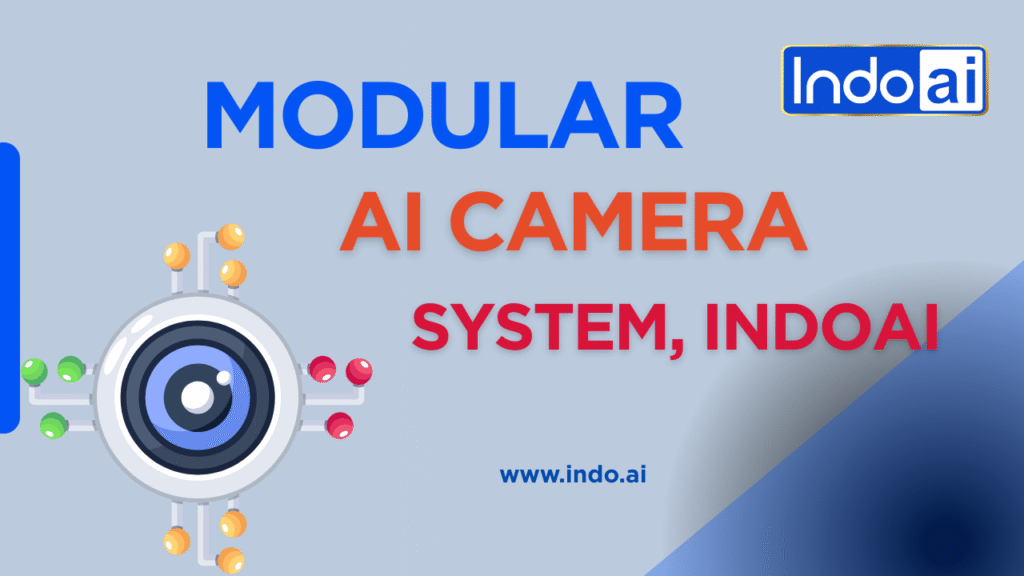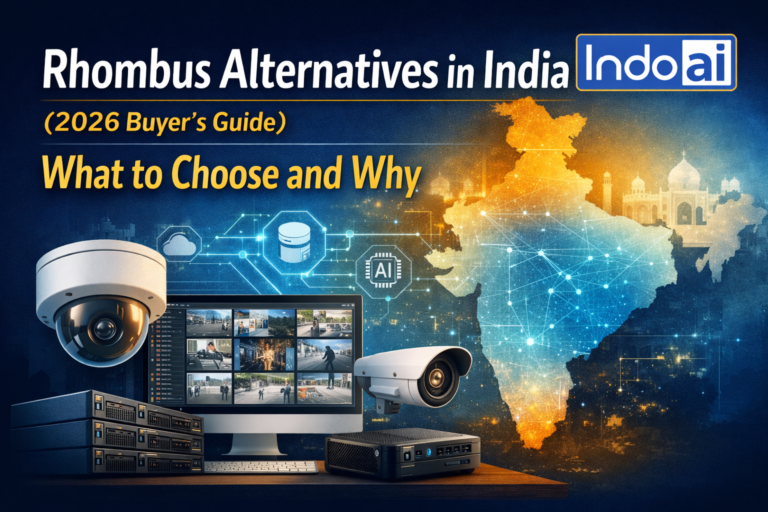
Table of contents
Introduction
In this inevitably accelerating age, technology is fluid, malleable, and tailored to our unique needs. Surveillance systems have shifted away from merely imaging footage for various intervals of storage and moved into the realm of intelligence. This next generation of intelligent video is Modular AI cameras. It integrated Artificial Intelligence (AI) along with customizable and upgradeable modules to deliver an adaptable and flexible surveillance technology solution.
Instead of replacing and re-purchasing a new camera each time the requirement changes, adding or swapping AI “modular” is as easy as downloading a software application. You not only avoid costs, but you also manage to minimize new methods to adapt with your surveillance systems. Whether it is retail analytics, industrial safety, traffic monitoring, and fire detection, Modular AI cameras are transforming our view, implementation, and scalability of intelligent video solutions.
What Is a Modular AI Camera?
A Modular AI camera is more than an AI-enhanced security camera. It is a flexible device designed to support many AI-based applications, typically in the form of containerized or app-like services. A modular camera does not lock a user into a single purpose: Facial recognition, license plate detection, etc. The camera can run multiple AI models smoothly or switch from one purpose to another as circumstances change.
At its core, a modular design includes:
- Interchangeable AI models: Pre-trained algorithms for specific tasks such as object detection, fire detection, vehicle counting, or PPE compliance.
- Edge AI processing: On-device computing power that enables real-time analytics without relying on cloud servers for primary inference.
- Scalability by design: The ability to add new capabilities through software rather than replacing the hardware.
This structure ensures the camera can evolve over time, delivering more value and extending its service life compared to traditional fixed-purpose devices.
Why the Modular Approach Matters
Typically, a traditional AI camera is sent to the customer with a limited feature set. While this may fit today’s needs, it could be difficult to adapt for the future. In some cases, a company may need to completely replace the hardware.The hardware, along with waste, can be expensive.
A Modular AI camera offers companies the ability to upgrade intelligence without changing the physical unit. This feature is especially important for rapidly evolving industries trying to adapt to digital transformation, where daily operational priorities change on a dime.
Key Advantages of Modular AI Cameras
Long-Term Savings
Company budgets can only “budget” for so many replacements of entire systems; instead, they can spend on parts of upgrade software and all systems can maximize their initial investments.
Speed of Enhancement
Modules on a common architecture allow new AI models to be installed very quickly (often in less than 10 minutes). Organizations can respond to threats and/or opportunities more timely.
Designed for Edge AI
By inference directly on the camera and running modules in the device, there is no latency and no associated costs from cloud. This matters when you need alerts immediately as with fire detection or intrusion monitoring.
Less Downtime
The major pushback is allowing yourselves downtime while modules are being installed. If upgrades can be done off-shift, even given the odd, even installing remotely, it does not take systems off line for extended periods, as personnel change.
Reducre eWaste
Extending a life-cycle of hardware can help reduce electronic waste and relate to global sustainability and corporate responsibility goals.
How Modular AI Cameras Work
At the core of a Modular AI camera is an advanced processing engine, which is a GPU or dedicated AI chip, that can run deep learning algorithms right on the device. Alongside the camera hardware, a software layer exists that implements AI models as separate modules allowing different AI models to co-exist in the same device without interference.
When a new capability is required, the relevant AI Module can simply be added to the device. This could be a model for license plate recognition, people counting, or temperature irregularity. The camera’s processing engine will run the AI module in real-time and provide real-time insights, before executing predetermined responses including alarm notifications and logging.
Why IndoAI Excels in Modular AI Cameras
Through advanced engineering and readiness concepts, IndoAI has effectively established itself as a leader in that space. The cameras are built with Appization technology, allowing businesses to easily add or replace AI models, much the same way they install applications when using a mobile phone.
What sets IndoAI apart:
- High-Performance Edge Processing
IndoAI cameras employ cutting-edge modules utilizing GPU technology to run multiple AI models at once to ensure accuracy and ultra-low latency for mission-critical applications. - Wide Model Library
IndoAI provides many pre-developed AI models for an array of use cases, inclusive of fire detection, PPE compliance, vehicles, faces, and many more, producing speedy and seamless deployments. - Scalability Without Hardware Lock-In
Companies can start small and grow as required. IndoAI’s modular architecture enables even the most basic single-model deployments to upscale to multi-application models. - Security and Compliance
All AI processing occurs “locally,” with the option for encrypted data transfers for event logging that needs to take place in the cloud. This allows clients to proactively meet privacy regulation compliance and know the sensitive footage they are producing is kept secure. - Proven Industry Deployments Across Industry
IndoAI has been successfully deployed in multiple environments of deployment – from factory floors to schools and large public infrastructure – across many types of modular AI deployments that are constantly evolving with and supporting client needs.
IndoAI’s Modular AI camera solutions offer engineering accuracy along with their real-world flexibility, providing immediate value and sustainable value, creating a cost effective solution for organizations looking to build scalable, resilient operations.
Overcoming Common Misconceptions
Despite the clear advantages, some decision-makers hesitate to adopt modular AI solutions due to misconceptions:
- “It’s too complicated to manage.” The idea of the modular interface is to make you life easier, the user can add, remove and upgrade modules via dashboards, often without any technical education.
- “AI models will slow the camera down.” The modular AI camera space, especially for companies like IndoAI, has developed cameras that are built to run multiple AI models concurrently and not slow frame rates.
- “Upgrades are expensive.” Upgrades via software are a much cheaper solution vs a complete hardware upgrade, the ROI overall is far better.
Looking Ahead: The Future of Modular AI Cameras
The original concept of Modular AI cameras has limitless potential beyond the current use cases. As AI research and applications in general evolve greatlt. It reduces emotion detection timeframes, environmental hazard identification, etc. Prolonged modularity means no previous investment is lost and the new model can be operationalized immediately without a consequential hardware replacement.
Additionally, as industries shift towards Industry 4.0 and the emergence of smart cities, modular AI cameras will be at the forefront. It will be of an integrated, automated decision-making system. They operate as independent devices by capturing data at the edge. While seamlessly embedding themselves within a central data management dashboard. And ultimately will be critical in this next generation of connected infrastructure.
To conclude,
The Modular AI camera is more than a surveillance device; it is a dynamic intelligence platform designed for future-proofing. By integrating longevity of hardware with flexibility of software, it offers unmatched scalability, value for money, and operational ability.
For organizations wishing to lead with the changing dimensions of challenges, modularity is not only an advantage, it is a requirement. In this space IndoAI is a provider that understands the tricky balance between cutting-edge AI technology and its practical and scalable deployment.



